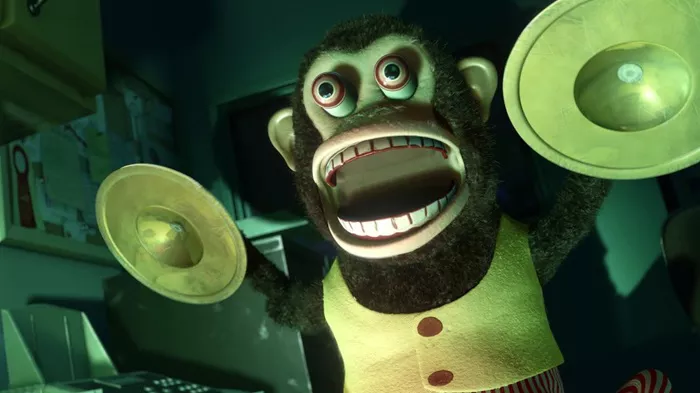The Toy Story franchise, created by Pixar Animation Studios, is widely celebrated for its heartwarming narratives, memorable characters, and innovative animation. However, beneath its charming surface, the series contains elements that some viewers may find unsettling or frightening, particularly for younger audiences. This article explores the various aspects of fear and tension present in the Toy Story films, examining specific scenes, themes, and characters that contribute to a sense of unease.
Fear in Animation
Fear is a complex emotion that can manifest in various ways, particularly in storytelling. In animated films, fear often arises from unexpected situations, dark themes, or the portrayal of antagonistic characters. Toy Story, while primarily a family-friendly series, does not shy away from incorporating elements that evoke fear or anxiety, particularly in its darker moments.
The Nature of Scary Scenes in Toy Story
1. Toy Story (1995)
The original Toy Story film introduces audiences to a world where toys come to life when humans are not present. While this premise is inherently whimsical, it also raises questions about the nature of existence and the potential for abandonment.
Sid’s Character: One of the most memorable and frightening aspects of the first film is the character of Sid, the next-door neighbor. Sid is depicted as a sadistic child who enjoys torturing and mutilating toys, creating a palpable sense of danger. His room, filled with disfigured toys, serves as a nightmarish environment that contrasts sharply with the otherwise playful tone of the film.
The “Mutant” Toys: The toys that Sid has altered become symbols of fear and trauma. Their grotesque appearances and the backstory of their mutilation evoke a sense of horror, particularly for younger viewers. The scene where Woody and Buzz encounter these toys is tense, as it highlights the potential for violence and the loss of innocence.
2. Toy Story 2 (1999)
The sequel continues to explore darker themes, particularly around the concepts of loss and abandonment.
Stinky Pete and the Collector’s Theme: The character of Stinky Pete, the prospector, embodies the fear of being discarded. His motivations stem from a desire to be appreciated, which resonates with the overarching theme of the series. However, his deceptive nature and manipulation create tension, especially when he reveals his true intentions to Woody and Buzz.
The Abandonment of Jessie: Jessie’s backstory, which includes being abandoned by her owner, introduces a poignant and frightening element of loss. The emotional weight of her narrative can be unsettling, as it taps into the fear of being unloved or forgotten.
3. Toy Story 3 (2010)
Toy Story 3 is often regarded as the darkest installment of the franchise, with several scenes that may be too intense for younger audiences.
The Incinerator Scene: Perhaps the most infamous moment in Toy Story 3 occurs when the toys face imminent destruction in a garbage incinerator. The sheer terror of the situation, combined with the emotional weight of the characters’ potential demise, creates a deeply unsettling atmosphere. The scene effectively captures the fear of loss and the inevitability of change, resonating with both children and adults.
Lotso’s Villainy: Lotso, the main antagonist, presents a more sinister threat than previous villains. His charming facade masks a manipulative and cruel nature, creating a sense of dread as the toys navigate his treacherous world. Lotso’s backstory, which involves betrayal and abandonment, adds depth to his character while simultaneously heightening the film’s tension.
4. Toy Story 4 (2019)
The latest installment continues the trend of exploring darker themes, albeit through a more existential lens.
Forky’s Existential Crisis: The character of Forky introduces a unique form of fear—existential dread. As a toy made from trash, Forky grapples with his identity and purpose, leading to moments of anxiety that resonate with adult viewers. His repeated attempts to “throw himself away” serve as a metaphor for the fear of non-existence, which may be unsettling for younger audiences.
Gabby Gabby and the Dummies: Gabby Gabby, with her army of ventriloquist dummies, embodies a more traditional horror trope. The dummies’ eerie appearance and the unsettling nature of their movements create a sense of fear, particularly in scenes where they confront Woody and Forky. The film cleverly juxtaposes this horror with humor, allowing it to appeal to a broad audience.
See Also: Why Was Toy Story 4 Sad?
The Impact of Scary Scenes on Young Audiences
The Toy Story films, while primarily aimed at children, often include elements that can be frightening. Research indicates that children respond differently to fear based on their age and developmental stage.
Children Under 5: For this age group, the Toy Story films may be overwhelming due to the presence of scary characters and intense situations. Experts often recommend parental guidance for younger viewers, as scenes featuring Sid, Lotso, or the incinerator can provoke fear and anxiety.
Children Aged 5-8: Parental guidance is also advised for children in this age range. While they may be able to process some of the film’s themes, the darker elements can still evoke strong emotional responses.
Children Over 8: Older children are generally more equipped to handle the complex themes of fear and loss presented in the Toy Story films. They can appreciate the emotional depth of the characters and the narrative without becoming overly frightened.
Conclusion
The Toy Story franchise masterfully balances moments of fear with themes of friendship, love, and resilience. While the films contain scary scenes that can unsettle younger viewers, they also provide valuable opportunities for emotional growth and understanding. The exploration of fear in Toy Story serves to enrich the narrative, allowing audiences of all ages to engage with the characters on a deeper level. Ultimately, the Toy Story films remind us that fear is a natural part of life, and facing it can lead to growth and connection. As parents and guardians navigate the viewing experiences of their children, they can use the franchise’s themes to foster discussions about fear, identity, and the importance of companionship in overcoming life’s challenges.

